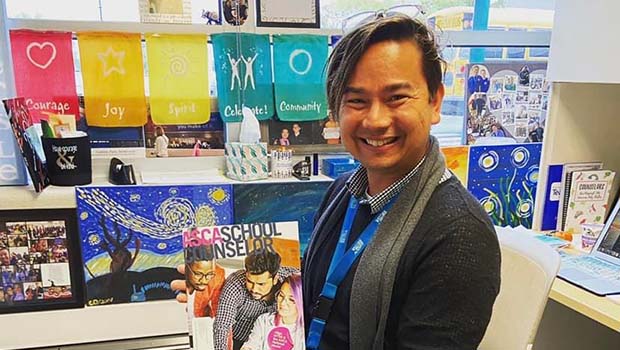This week is National School Counseling Week, a chance to underscore the impact school counselors have on their students, colleagues, and communities. School counselors play an essential role in schools, helping students manage emotions and behaviors, learn interpersonal skills and academic achievement strategies, and collaborating with families and teachers to ensure student success.
Many students were already facing serious mental health challenges before the pandemic, and the last two years have only exacerbated the issue. Teachers have seen an increase in the number of students in need of supports, but many schools do not have sufficient numbers of counselors, social workers, or school psychologists on staff. Additional mental health supports in schools are one of CEA’s top legislative priorities this legislative session.
At Westside Middle School Academy in Danbury, school counselor Curtis Darragh serves 375 students—significantly more than the 250:1 ratio recommended by the American School Counselor Association.
He says that he’s seen a huge increase in anxiety, depression, and cutting behaviors, and with the many students he supports he’s constantly worried that someone will fall through the cracks.
When children knock on his office door and he can’t answer because he’s meeting with another student or on the phone with a parent Darragh, who is Connecticut’s 2021 School Counselor of the Year, is left to worry about what he missed.
“I’ll go to bed each night during the school year thinking, ‘Oh my God, what did that kid want to tell me?'”
Some students might be dropping by to say “hello,” but others could be self-harming or expressing suicidal ideation.
“With 375 students, there are always 5-10 that I have to put on a wait list,” Darragh says. He currently supports 125 students from each of the three grades at his school—sixth, seventh, and eighth.
Earlier in his career Darragh worked with a more reasonable number of students.
“I’ve had 250 before—that’s manageable,” he says. “Ideally in a middle school world we would loop with our kids for all three years. In sixth grade we would work on the transition to middle school—executive functioning, planning, and time management skills. Helping students realize they’re not going to be friends with everybody, when to apologize, how to handle social media, being a bystander versus an upstander.”
He continues, “In seventh we’d focus on how to deal with healthy relationships, how to handle the work load in preparation for high school. Making responsible and respectful choices, and starting to think about colleges and careers. In eighth grade we’d deal with maintaining healthy relationships, empathy, sympathy, registering for high school courses.”
With 250 students in a single grade, Darragh says he could really focus in on what those students need the most, rather than being pulled in many different directions as he manages three grades at a time.
With his new 6th graders, Darragh says he starts by asking “What do you want to be? What is your life journey? How are you going to make a difference?”
He explains, “Just having those conversations is important—igniting that fire, making sure students know that they have that go to person, that trusted person in the building. I had a kid in here this morning, in tears, who said, ‘I just needed a place to cry.’ I told them, ‘I have a big heart that cares and big ears to listen.’ And that’s all that kid needed to hear. Sometimes that’s all it takes—just being there for a student.”
Subscribe to the CEAdaily to stay up to date on the latest news this legislative session, including calls to action about legislation related to mental health.







